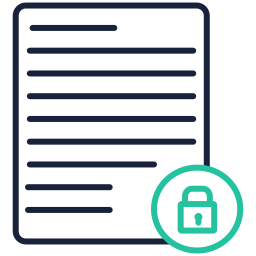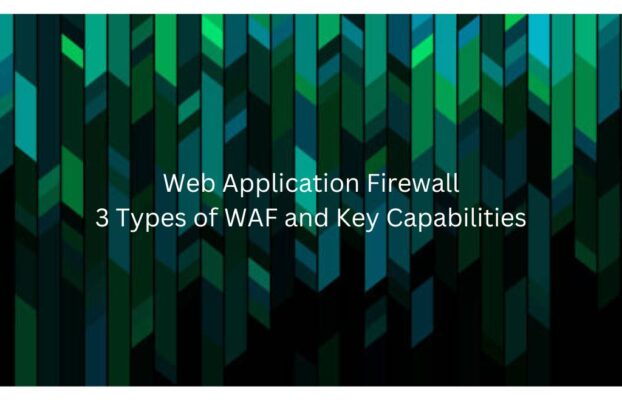Enterprise Web Application Firewall Solution
Protects websites & APIs from OWASP Top 10 attacks, known and 0-day vulnerabilities
Web Applications are #1 source of security breaches

68% Websites

30 Seconds

2 Billion
Engineered to protect against the most advanced attacks

Breach Protection

Built-in Signatures

AI-based Self Learning

DDoS Mitigation

Upload File Scanning

Security Threat Feeds
Unique Features

Bot Deception

Developer Scripts

Behavioural Rules

API Management

Bot Management

Compliance
Common WAF Questions and Concerns
Here is a list of the most common questions and concerns about WAF.
A WAF stands for web application firewall. It refers to a solution which is designed in order to shield websites from application security threats by examining its incoming traffic, blocking attack attempts and monitoring & filtering suspicious activities.
WAFs are positioned at the edge of a network so they can act as a gateway for all incoming traffic. It ensures that the attack traffic does not reach the application and protects your resources against the variety of cyber-attacks such SQL-Injection, Cross-Site Scripting (XSS), Session Hijacking and other OWASP top 10 vulnerability threats.
Haltdos Web Application Firewall stop the attacks right at the network edge and protects your website from common cyber threats before they reach your application servers.
The Web Application Firewall (WAF) examines the incoming traffic that is accessing your website. It inspects the HTTP parameters and applies custom rules in order to help filter out malicious traffic from legitimate website visitors. With Haltdos Web Application Firewall, you can decide whether to block, challenge or simulate an attack before it reaches to your website or web application.
The OWASP Top 10 are the most critical threats to any web application. OWASP top 10 includes attacks such as SQL injection, Broken Authentication, Data exposure, Cross site scripting (XSS), Remote Code Execution (RCE), etc.
Perennial leading threats include SQL injection. SQL injection is a type of attack where an attacker injects an SQL query into a database, allowing the attacker to modify or read sensitive data, execute admin operations and issue commands to the operating system. XSS or cross-site scripting occurs when an attacker executes malicious scripts into a legitimate website. By performing XSS, an attacker can take over any ongoing user session and get an access of the user’s personal information such as passwords, credit card details, etc.
A web application firewall can protect against variety of application layer attacks, OWASP Top 10 as well as zero-day threats. Zero day threats are essentially unknown vulnerabilities, which makes protecting against them difficult but essential and a comprehensive web application firewall can do that.
Acting as a reverse proxy, the HaltDos Web Application Firewall inspects every incoming request to detect and block inbound attacks while inspecting response traffic in order to prevent loss of sensitive data such as credit card details, passwords, social security numbers, etc.
No, we don’t host your website. We act as an intermediary for all your incoming traffic. All the traffic that coming to your website will be passed through our secure network but will be sent directly to your host / web server.
Reflecting our experience in application security, Haltdos’s WAF supports many advanced security measures that give extra protecting measures. These include:
- A custom rule engine for simple creation of security rules that apply your organization’s security policies.
- Advanced bot protection that distinguishes between “good” bots (e.g., search engine crawlers) and “bad” bots.
- Security Scanner to continuously monitor and protect your website for against variety of malware and malicious URL Patterns.
- Anti-Virus to identify the malicious pattern within an uploaded file.
- DDoS Security to prevent against application layer DDoS attacks.
- Load balancing for distributing traffic across a number of servers to increase capacity and reliability of your website.
Yes. Haltdos Web Application Firewall is certified by the PCI Security Standards Council. It provides cost-efficient compliance with PCI DSS requirement 6.6 without any changes to your application.
Yes, the Firewall plans offer different SLA's depending on your plan. They range from 8 support hours per day to full 24-hour support.
A WAF examines both the Hyper Text Transfer Protocol (HTTP) request methods/types: GET and POST requests. GET requests are basically when a user tries to access your website/web application and POST requests are basically when your application sends a response to a user’s GET request.
A web application firewall distinguishes legitimate and illegitimate traffic based on the rules that are configured.
A web application firewall is also responsible for detecting unusual behavioral patterns for your web application. For example, if an attack causes your web application to remand a lot of larger responses than expected, a WAF is ready to observe that abnormality, and acts accordingly to provide protection to your web application.
Another example of a WAF’s use is its ability to distinguish between spammy and legitimate comments on a blog post by monitoring particular keywords. These comments will then be flagged as spam and discarded before reaching the comment section of your website.
As described by these examples, a WAF is simply an intermediary between the web application and the client. It can be considered as a guard for your web application that helps to monitor and prevent against unusual application behavior.
Yes.
…Could you tell me why?
From a Web Application Firewall standpoint, websites fall into two basic categories: the ones that needs a WAF, and the ones that really needs a WAF.
Websites that require a WAF are the ones that need to be protected against attack attempts and malicious traffic or bots which can easily penetrate into your website and manipulate the backend server causing outage to your website. This includes spamming, content scraping and modifying page content (some of which can redirect users to malware), all consequences that can be bad for any business small or large.
Websites that really needs a WAF are the ones that store sensitive information, whether it is that of a company, website or its users/clients. Web application attacks are the most common cause of data breaches, which makes them the root cause of angry users, bad publicity and possibly even civil lawsuits and regulatory fines.
It is required for network administrators to deploy a robust security solution that can protect their internet facing assets against lurking cyber threats as well as meet their business requirements. A comprehensive WAF can fulfill this need.
While choosing a comprehensive WAF, administrators should look for whether a WAF inspects and handle Web page content such as HTML, Dynamic HTML (DHTML), and cascading style sheets (CSS), as well as the protocols that your application uses, such as HTTP and HTTPS, provides features such as virtual patching, protection against denial of service (DoS) attacks, does web scraping and has an inbuilt vulnerability scanner. Owners of websites that accept or process credit card payments should also look for a WAF that is a PCI (payment card industry) DSS version 6.6 compliant.
You can deploy a WAF on-premise and/or over the cloud to shield your web applications as well as the data center against wide range of attacks.
Yes we do, if it's within 30 days of purchase.
No, if you implement a web application firewall - it offers your website a capability to cache the content present on your website which ultimately improves the website performance and doesn’t affect your search engine optimization. Where Google and other search engine crawlers still access your content with your domain regardless of the DNS change.
Yes. The WAF has a capability to understand the application stack of your website and applies pre-defined rules to launch a specific mitigation accordingly, without requiring any manual fine tuning or creating custom rules.
Lack of web application monitoring can create many opportunities for the attackers to target web applications. Even if a web application is appropriately programmed, there is a chance that the application can still be vulnerable and exposed to latest attacks trends.







